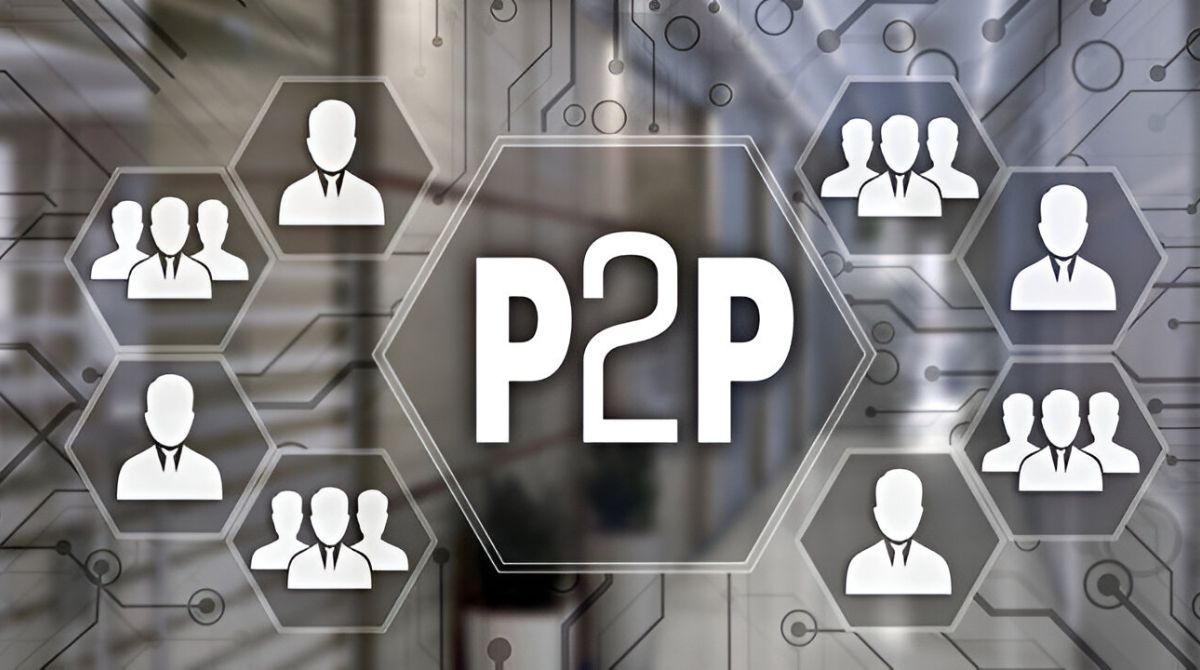Introduction
Peer-to-peer (P2P) lending platforms have been gaining significant popularity in recent years, especially among the millennial generation. P2P lending refers to the practice of directly connecting lenders with borrowers through online platforms, effectively cutting out traditional financial institutions like banks. This approach offers a more streamlined and accessible way for individuals to borrow money or invest their funds.
Millennials, typically defined as those born between the early 1980s and late 1990s, are known for their tech-savvy nature and strong inclination towards digital solutions. This generation has embraced P2P lending platforms as an alternative to traditional financial institutions, seeking greater control over their finances and the potential for higher returns on their investments.
In this article, we will delve into the world of P2P lending and focus on the extent to which millennials utilize these platforms. We will explore the reasons behind their growing interest in P2P lending, the benefits they enjoy, the popular platforms they prefer, as well as the challenges they may face. By understanding the trends and factors influencing millennial engagement with P2P lending, we can gain valuable insights into the future of this disruptive financial model.
It is crucial to recognize that P2P lending is not limited to personal loans. The scope of P2P lending extends to various forms of lending, such as small business loans, student loans, and even peer-to-peer investing. The focus of this article, however, will primarily be on personal lending, as it encompasses a significant portion of P2P lending activities among millennials.
So, let’s dive deeper into the world of P2P lending and explore the factors behind the increasing popularity of these platforms among millennials, as well as the potential implications for the future of personal finance.
Definition of P2P
Before delving into the specifics of millennial usage of P2P lending platforms, it is important to have a clear understanding of what P2P lending entails. As mentioned earlier, P2P lending refers to the practice of directly connecting lenders with borrowers through online platforms, bypassing traditional financial intermediaries.
In a P2P lending model, individuals who have surplus funds can lend them directly to individuals or businesses in need of capital. This method offers an alternative to the traditional banking system, where borrowers rely on banks or other financial institutions to obtain loans. Instead, P2P lending platforms facilitate the borrowing process by providing an online marketplace that connects lenders and borrowers.
One of the key features of P2P lending is the absence of a brick-and-mortar institution. The entire lending process takes place digitally, eliminating the need for physical branches and paperwork. Borrowers can create loan listings on the platform, detailing the amount they need, the purpose of the loan, and the interest rate they are willing to pay. Lenders, on the other hand, can browse through these listings and choose the ones they wish to invest in based on their risk appetite and potential returns.
P2P lending platforms typically employ a rigorous screening process to assess the creditworthiness of borrowers. This helps lenders make informed decisions and mitigate the risk of default. Factors such as credit history, income stability, and debt-to-income ratio may be taken into account during the evaluation process. By leveraging technology and data analytics, P2P lending platforms aim to provide a more efficient and inclusive lending environment, catering to borrowers who may be overlooked or denied loans by traditional lenders.
Another distinctive feature of P2P lending is the concept of fractional lending. Unlike traditional lending, where a single lender provides the entire loan amount, P2P lending allows multiple lenders to collectively fund a loan. This diversifies the risk for lenders and allows for greater flexibility in loan sizes. For example, a borrower seeking a loan of $10,000 may receive funds from multiple lenders who each contribute a portion of the loan amount.
Overall, P2P lending platforms offer a digital solution that facilitates direct lending between individuals, providing borrowers with access to capital and lenders with potential investment opportunities. This disruptive model has gained significant traction in recent years, and its appeal to millennials is in part due to its transparency, convenience, and potential for higher returns compared to traditional financial institutions.
Statistics on Millennials
To understand the extent to which millennials are embracing P2P lending platforms, it is essential to examine key statistics and trends surrounding this generation’s financial behavior. Millennials, often referred to as digital natives, have displayed a remarkable affinity towards technology-driven solutions, including P2P lending. Here are some noteworthy statistics to consider:
- Adoption Rate: A study conducted by TransUnion revealed that millennials are the age group most likely to have opened personal loans through P2P platforms. In fact, they accounted for around 45% of total P2P personal loan originations in mid-2021.
- Growth Rate: According to a report by Statista, the number of millennials using P2P lending platforms more than doubled between 2016 and 2021. This indicates a significant rise in the adoption of this alternative lending method among this generation.
- Loan Purposes: Millennials utilize P2P lending platforms for a variety of purposes. A survey conducted by LendingTree found that the top reasons for millennials seeking P2P loans include debt consolidation, home improvements, and financing education expenses.
- Investment Opportunities: It’s not just borrowing that has caught the attention of millennials. Many are also using P2P lending platforms as an investment tool. A survey conducted by Lend Academy found that 40% of millennial respondents had invested through P2P lending platforms, highlighting the interest in accessing alternative investment opportunities.
- Borrower Profile: Millennials represent a diverse group of borrowers, encompassing various credit profiles and income ranges. P2P lending platforms have helped bridge the gap for individuals with limited or no credit history, who may find it challenging to access loans through traditional lending channels.
These statistics demonstrate that millennials are actively engaging with P2P lending platforms, not only as borrowers but also as investors. The combination of convenience, accessibility, and potential for higher returns has made P2P lending an attractive option for this generation, shaping the landscape of personal finance and investment opportunities.
Benefits of P2P Platforms
P2P lending platforms offer a range of benefits that have undoubtedly contributed to their popularity among millennials. These benefits not only attract borrowers seeking alternative financing options but also appeal to individuals looking to diversify their investment portfolios. Here are some key advantages of P2P platforms:
- Accessibility: P2P lending platforms provide a more accessible borrowing option for millennials compared to traditional financial institutions. These platforms often have lower barriers to entry, making it easier for individuals with less-established credit histories or limited financial means to secure loans.
- Convenience: The digital nature of P2P lending platforms offers unparalleled convenience. Borrowers can easily apply for loans online, compare rates, and receive funds quickly, without the need for time-consuming paperwork or face-to-face interactions with loan officers.
- Competitive Interest Rates: P2P lending platforms can offer competitive interest rates to borrowers, as they operate with lower overhead costs compared to traditional banks. This can result in potential cost savings for borrowers, making it an attractive alternative for those seeking affordable loans.
- Investment Opportunities: P2P lending platforms provide an additional avenue for millennials to diversify their investment portfolios. By lending money directly to borrowers, investors can potentially earn higher returns compared to more traditional investment options, such as savings accounts or bonds. This appeals to millennials who are often seeking innovative ways to grow their wealth.
- Transparency: P2P lending platforms foster transparency by providing borrowers with clear information on interest rates, fees, and repayment terms. This transparency allows borrowers to make informed decisions and understand the true cost of borrowing, empowering them to choose the best loan option for their needs.
- Community Engagement: P2P lending platforms often create a sense of community among borrowers and lenders. Borrowers benefit from the support and funding provided by individual lenders, while lenders have the satisfaction of directly helping others and promoting financial inclusion.
These benefits, encompassing accessibility, convenience, competitive interest rates, investment opportunities, transparency, and community engagement, contribute to the appeal of P2P lending platforms among millennials. As they continue to seek out financial solutions that align with their preferences and needs, P2P lending platforms offer an attractive alternative to traditional banking systems.
Popular P2P Platforms among Millennials
As the popularity of P2P lending grows among millennials, several platforms have emerged as favorites within this generation. These platforms offer user-friendly interfaces, diverse loan options, and attractive interest rates. Here are some of the most popular P2P lending platforms among millennials:
- LendingClub: LendingClub is one of the largest and most well-known P2P lending platforms. It offers personal loans with competitive interest rates, allowing borrowers to consolidate debt or fund major expenses. LendingClub provides a seamless online experience, making it a popular choice among millennials.
- Prosper: Prosper is another prominent player in the P2P lending space, offering personal loans for a variety of purposes. The platform has a user-friendly interface and provides borrowers with an easy application process. Prosper’s competitive interest rates and flexible loan terms make it an attractive choice among millennial borrowers.
- Upstart: Upstart stands out among P2P lending platforms due to its unique approach to assessing borrower creditworthiness. The platform utilizes artificial intelligence and alternative data sources to evaluate borrower risk. Upstart offers personal loans and student loan refinancing options, making it particularly appealing to millennial borrowers looking to optimize their educational loans.
- SoFi: SoFi targets millennials with a range of financial products, including personal loans, student loan refinancing, and mortgages. The platform provides competitive rates and offers additional benefits such as career coaching and networking events. SoFi’s emphasis on a holistic approach to financial wellness has resonated well with millennial borrowers.
- Peerform: Peerform focuses on providing personal loans to individuals with lower credit scores. The platform offers a straightforward application process and reasonable interest rates. Peerform’s commitment to financial inclusion appeals to millennials who may have limited credit history or face challenges accessing loans through traditional channels.
These platforms have gained popularity among millennials due to their user-friendly interfaces, competitive interest rates, and diverse loan options. They offer digital solutions that align with the tech-savvy nature of millennials and provide alternative financing opportunities beyond traditional banking channels.
Factors Influencing P2P Usage
Several key factors contribute to the increasing usage of P2P lending platforms among millennials. These factors reflect the preferences and needs of this generation, as well as the unique advantages offered by P2P lending. Here are some influential factors driving the usage of P2P lending among millennials:
- Technology Adoption: Millennials are known for their high level of comfort and familiarity with technology. P2P lending platforms leverage digital technology to provide a seamless and user-friendly borrowing and lending experience. The convenience and accessibility of these platforms resonate with millennials, who are more likely to embrace digital solutions for their financial needs.
- Financial Control: P2P lending platforms give millennials greater control over their finances. These platforms enable borrowers to access loans quickly and on their own terms, without dealing with the bureaucracy and paperwork associated with traditional banks. Millennials value the autonomy and flexibility provided by P2P lending, aligning with their desire for financial independence.
- Interest Rates: P2P lending platforms often offer competitive interest rates compared to traditional lenders. This can attract millennials seeking affordable borrowing options. Lower interest rates can help reduce the overall cost of borrowing and make loan repayment more manageable for this generation, who may be dealing with student loans or other financial obligations.
- Transparent Process: P2P lending platforms provide transparency throughout the lending process. Borrowers have access to clear information regarding interest rates, fees, and repayment terms. This transparency empowers millennials to make informed decisions and understand the true cost of borrowing, fostering trust and confidence in the P2P lending model.
- Peer-to-Peer Connection: Millennials value connection and community, even in their financial transactions. P2P lending platforms offer a more personal and human-centric approach to borrowing and lending, allowing borrowers to connect directly with individual lenders. This peer-to-peer connection creates a sense of community and engagement that resonates with millennials.
- Financial Inclusion: P2P lending platforms play a significant role in promoting financial inclusion. They provide opportunities for individuals with limited credit history or lower income levels to access loans that may be otherwise difficult to obtain through traditional lenders. Millennials, who may face unique financial challenges and limited credit histories, appreciate the inclusive nature of P2P lending platforms.
These factors, including technology adoption, financial control, competitive interest rates, transparency, peer-to-peer connection, and financial inclusion, contribute to the rising usage of P2P lending platforms among millennials. As this generation seeks more convenient and accessible financial solutions, P2P lending has emerged as a compelling alternative to traditional banking systems.
Challenges with P2P Usage for Millennials
While P2P lending platforms offer numerous advantages, there are also some challenges associated with their usage, particularly for millennials. It is important to be aware of these challenges to make informed decisions when utilizing P2P lending platforms. Here are some key challenges that millennials may encounter:
- Risk and Default: P2P lending involves a certain level of risk, as lenders directly fund individual borrowers. While platforms implement credit screening processes, there is still a risk of borrowers defaulting on their loans. Millennials need to carefully assess the creditworthiness of borrowers before lending funds to minimize the risk of potential losses.
- Information Overload: With a plethora of P2P lending platforms available, millennials may face information overload when trying to select the most suitable option. Understanding the nuances of each platform, such as interest rates, fees, and borrower profiles, can be overwhelming. Conducting thorough research and comparing platforms can help millennials navigate this challenge.
- Lack of Regulation: P2P lending is a relatively new and evolving industry, which means that regulations may still be catching up. The lack of comprehensive regulations can potentially expose borrowers and lenders to risks related to fraud, privacy, and data security. Millennials should exercise caution when sharing personal and financial information on P2P lending platforms and choose platforms with robust security measures in place.
- Diversification and Investment Knowledge: For millennials considering P2P lending as an investment opportunity, diversification and understanding investment risks are crucial. Investing too heavily in a single borrower or lacking knowledge about evaluating borrower credit profiles can lead to potential financial losses. It is important for millennials to diversify their investments and educate themselves about the P2P lending process.
- Limited Borrowing Options: While P2P lending platforms offer greater accessibility, millennials with limited credit history or lower income levels may face challenges in securing larger loan amounts or receiving favorable interest rates. Traditional lenders may still rely heavily on credit scores and income verification, making it more difficult for some millennials to access the funds they need through P2P lending platforms.
Awareness of these challenges can help millennials navigate the P2P lending landscape more effectively. Conducting due diligence, diversifying investments, understanding risks, and making informed decisions are crucial to mitigating these challenges and maximizing the benefits of P2P lending.
Conclusion
P2P lending platforms have emerged as a popular alternative to traditional banking systems, particularly among millennials. The convenience, accessibility, and potential for higher returns offered by these platforms have attracted a growing number of millennial borrowers and investors. By connecting individuals directly, P2P lending platforms provide borrowers with easier access to funds and offer lenders the opportunity to diversify their investment portfolios.
Millennials have embraced P2P lending due to several factors. The adoption of technology, desire for financial control, competitive interest rates, transparency, peer-to-peer connection, and inclusion of individuals with limited credit histories are some of the influential factors that drive millennial usage of P2P lending platforms. These platforms cater to the preferences and needs of millennials and provide them with a more personalized and community-oriented borrowing and lending experience.
However, it is important to acknowledge the challenges associated with P2P lending. Risks of default, information overload, lack of regulation, diversification and investment knowledge requirements, and limitations in borrowing options can pose challenges for millennials utilizing P2P lending platforms. It is crucial for millennials to exercise caution, conduct thorough research, and make informed decisions to navigate these challenges effectively.
In conclusion, P2P lending platforms have introduced new possibilities and disrupted the traditional financial landscape. Their popularity among millennials is a testament to the demand for innovative and accessible financial solutions. As technology continues to advance and the financial industry evolves, P2P lending is likely to remain a prominent option for millennials seeking flexible loans and investment opportunities.

























